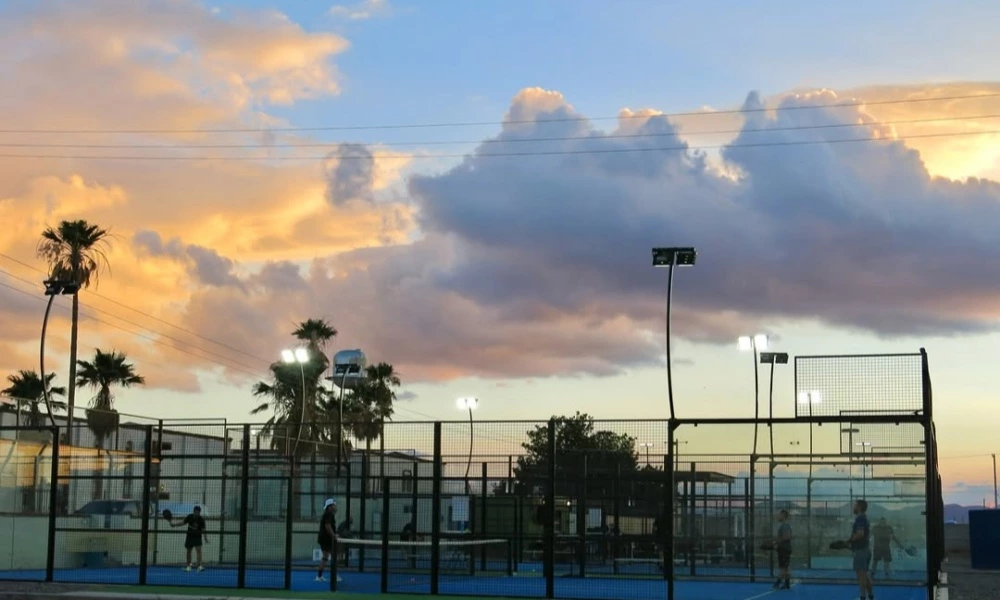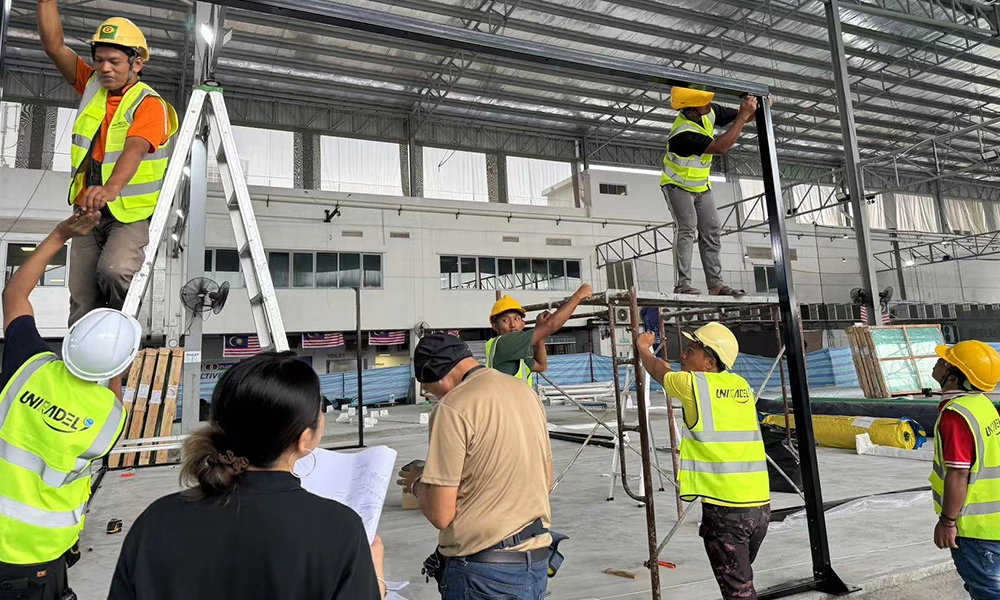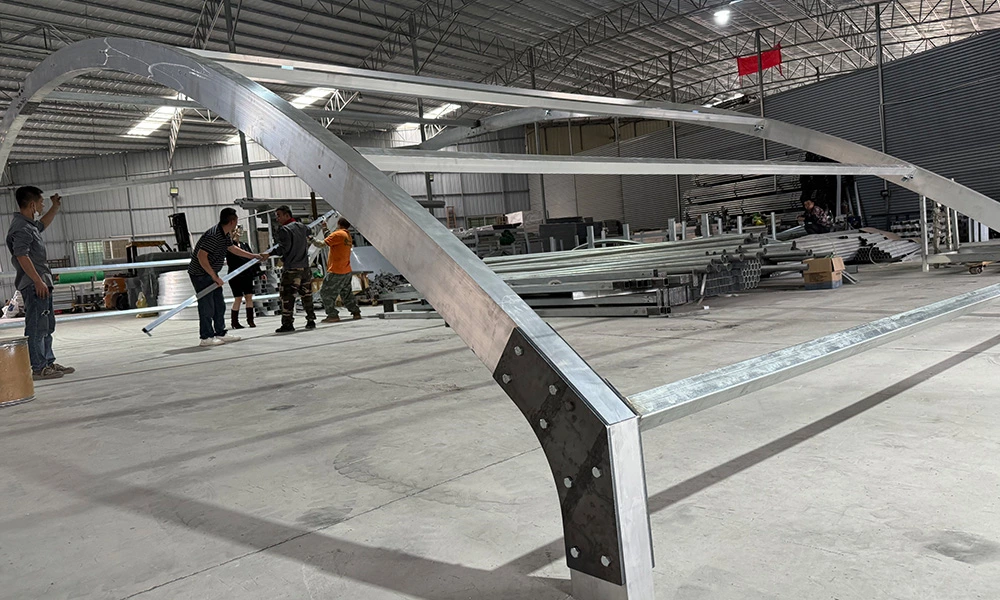What is a padel tennis court? What are its types?
In recent years, padel (padel tennis) has rapidly risen around the world and has become one of the most popular emerging sports. This sport combines the characteristics of tennis and squash, and has the advantages of being interesting, easy to get started, and highly social. As the core facility of this sport, the design and selection of padel courts are particularly important. Padel tennis clubs have been opened in the UK, Germany, France, the Middle East, Australia, Canada, and the United States. Tennis clubs, tennis academies, sports and leisure centers, hotels, luxury hotels and resorts, golf clubs, apartments, and leisure centers have also joined padel tennis to enrich their sports programs.
What is a padel court?
Padel Court is a sports venue designed specifically for padel competitions. The standard size is 20 meters long × 10 meters wide, surrounded by glass walls and metal fences. The ball can continue to hit after bouncing off the glass wall or fence, which is also the core gameplay that distinguishes padel from tennis.
The court floor often uses professional artificial turf, elastic acrylic or carpet to ensure comfort and safety during exercise. The standard net height is 88 cm in the center and 92 cm at both ends. There are transparent glass walls (3 meters high) around the venue to enhance the viewing experience and facilitate spectators and photography.

The origin of the padel court
The history of the padel court dates back to the late 1960s and originated in Mexico. Enrique Corcuera, now recognized as the founder of padel, built a small court at his home in Acapulco, Mexico. Due to limited land, the court he designed was much smaller than a standard tennis court, and to prevent the ball from flying into the neighbors' homes, he surrounded the court with a wall.
To adapt to this special venue, he abandoned the traditional tennis racket and switched to wooden beach rackets, and gradually formulated rules that allowed the ball to bounce off the wall, and the prototype of the sport was born.
In 1974, Corcuera's friend, the Spanish noble Prince de Hohenlohe, brought the sport to Spain. Soon thereafter, Julio Menditengui promoted it to Argentina. To date, Spain and Argentina have become two important countries for padel sports, and padel continues to expand in South America, Europe, the Middle East and other places, becoming the second most participated ball sport in the world, second only to football.
Common types of Padel Court
Depending on different installation scenarios, usage requirements and visual effects, padel courts can be divided into the following types:
1. Panoramic Padel Court
Panoramic design, the back wall uses a whole piece of tempered glass without column support, which maximizes the visual transparency and is suitable for high-end clubs and events.
Wide visual and strong viewing
Widely loved by European and Middle Eastern customers
Optional customized colors and LOGO

2. Classic Padel Court
This is a traditional standard style with stable structure and high cost performance. It is a popular choice for padel clubs or early investors.
Standardized design for easy batch construction
Easy installation and adaptability to various terrains
Suitable for initial commercial operation
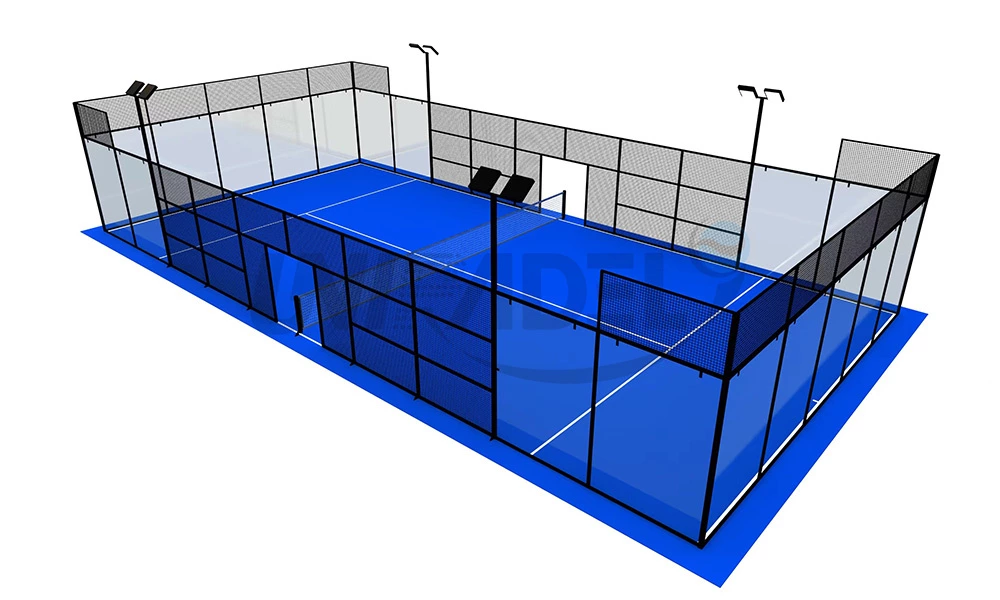
3. Super Panoramic Padel Court
Further optimization based on the panoramic court, large areas of column-free glass are used on the sides and back to provide the ultimate visual experience for spectators and photographers.
Suitable for large-scale events and high-end clubs
Stunning appearance, improving the grade of the venue
Complex installation process, reflecting the brand strength
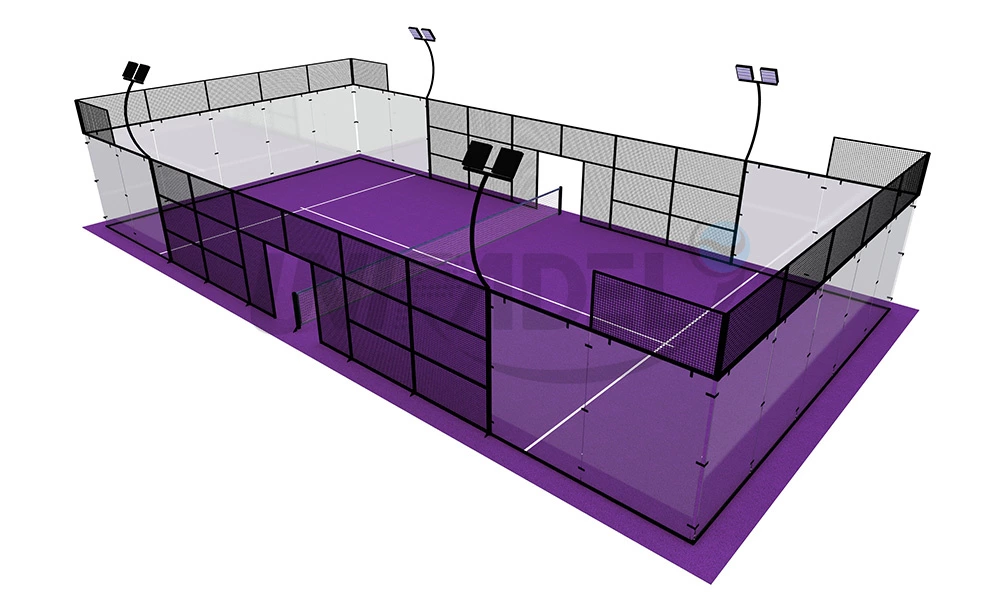
4. Portable Padel Court
Designed for temporary events, exhibitions or rentals, no ground foundation is required, can be quickly built and disassembled, and is flexible to move.
Suitable for commercial activities and exhibitions
Can be used repeatedly to save long-term costs
Stable structure, in line with competition standards
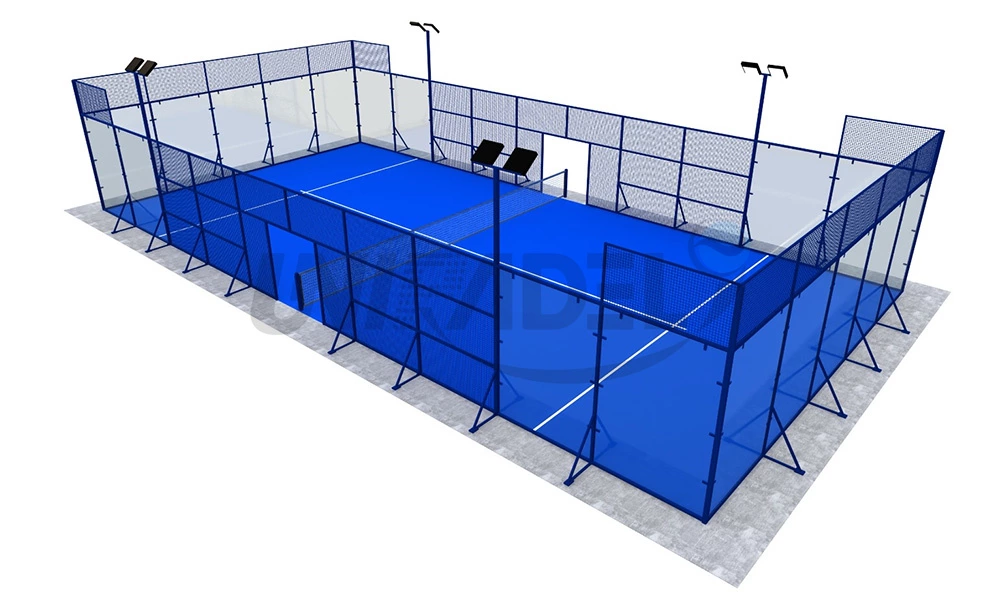
5. Single Padel Court
Small size, only for 1-on-1 practice or single entertainment, suitable for home gardens, fitness clubs or youth training.
Small space occupation, suitable for private courtyards
Entry-level choice, promoting padel sports
Can also be used as a special practice field for children
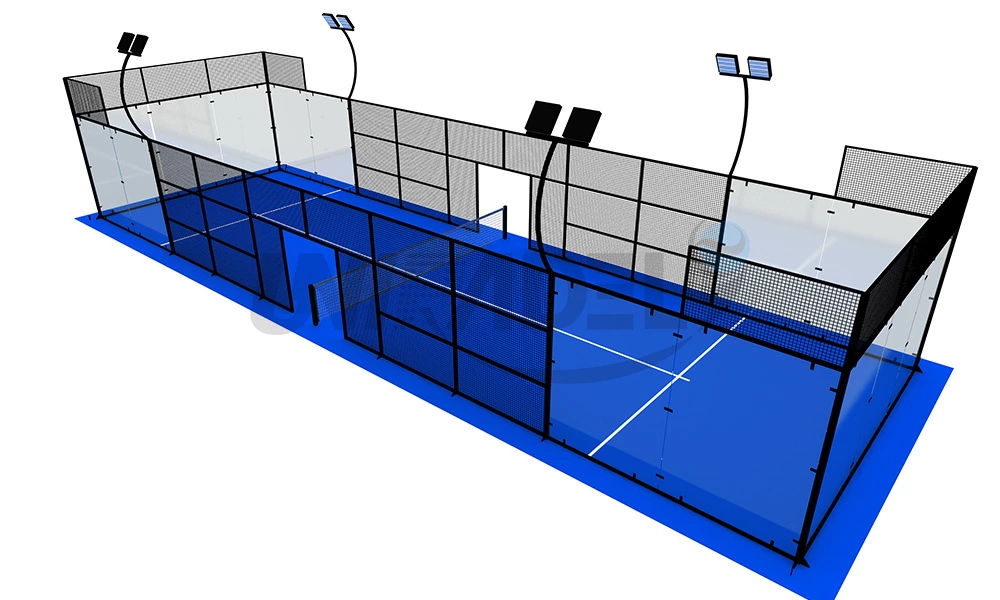
What do you need to start playing padel?
To start this sport, you need to know the following basic configurations and precautions:
Court:
The standard size is 20 meters x 10 meters
It is composed of glass walls + fences
The ground is artificial turf or other elastic materials
It can be built indoors or outdoors, preferably with a good lighting system
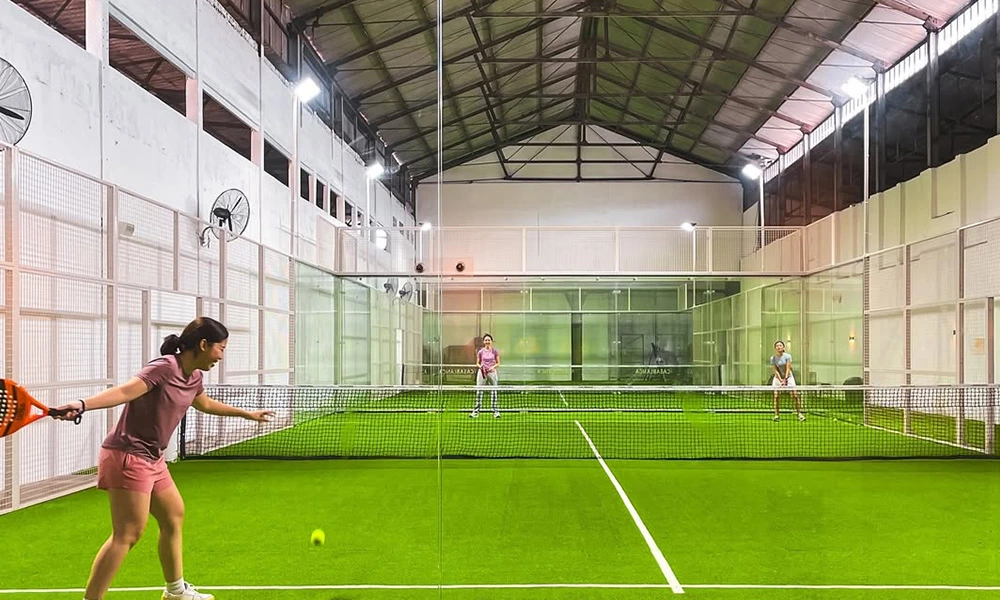
Racket:
The padel racket does not have a stringing structure like a tennis racket. The racket face is a solid foam core + carbon fiber shell, with a perforated design to reduce weight.
The types are divided into round (control type), teardrop (balanced type), and diamond (attack type)
The racket length must not exceed 45.5cm and the width must not exceed 26cm
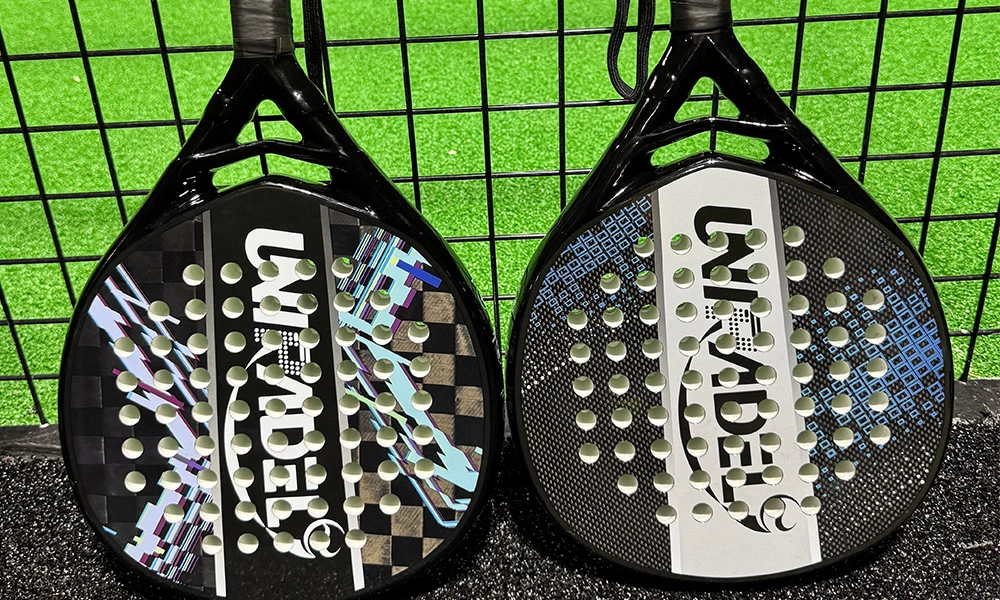
Ball:
It looks similar to a tennis ball, but with lower pressure, moderate elasticity, and easy control. The ball diameter is 6.326.77cm and weighs 5659 grams.
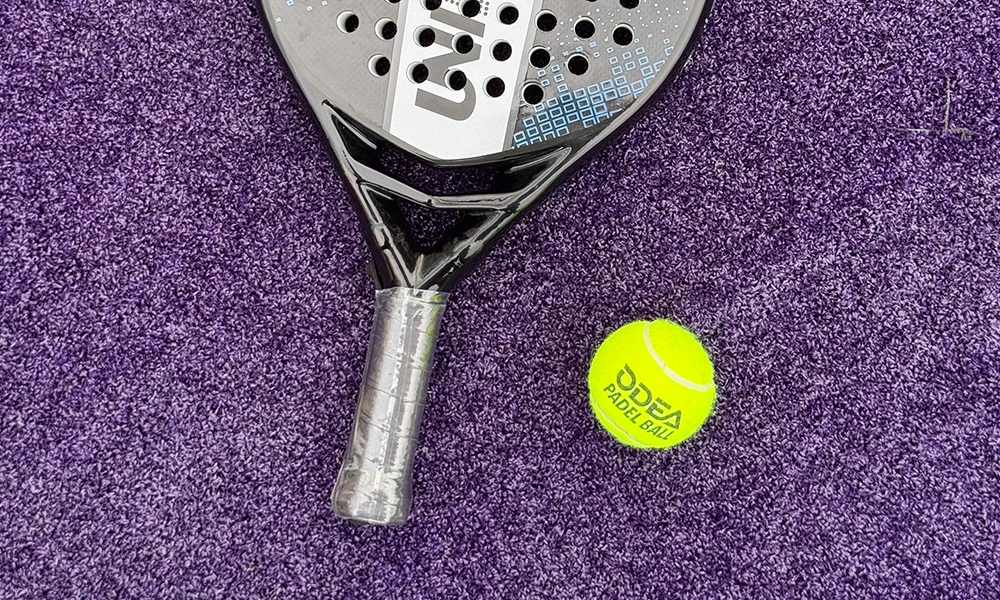
Precautions:
Beginners are advised to choose a round racket to enhance ball control
Warm up before starting to avoid injuries
Pay attention to the anti-slip and drainage conditions of the outdoor court
Wearing professional padel shoes can enhance grip and reduce accidents
What are the potential countries/regions for padel court in emerging markets?
As padel sports are rapidly gaining popularity in Europe and Latin America, more and more emerging markets are beginning to pay attention to this vibrant sport.
At present, Asia (such as Japan, South Korea, Vietnam, Indonesia), the Middle East (such as Saudi Arabia, the United Arab Emirates), Africa (such as Kenya, Nigeria, Morocco) and Eastern Europe (such as Poland, Romania, Bulgaria) are still in the initial stage of padel sports, but they have a large young population, a growing awareness of fitness and a trend of investing in sports infrastructure. In Africa, padel sports are still in the early stages of development, but they have great potential. South Africa, as the first country in Africa to introduce padel, has established several clubs and formed a preliminary player community. In countries with rapid economic growth and accelerated urbanization, such as Nigeria, Kenya, Morocco, Ghana, and Egypt, a large number of young people who love fitness and pursue a trendy lifestyle are emerging. Especially in countries with suitable climate and rich tourism resources, padel courts are not only sports, but also a fusion of business and social scenes.
The middle class in these countries is rising, commercial real estate and sports and leisure space are expanding, and the climate is suitable for outdoor sports, creating an ideal environment for the laying and operation of padel venues. At the same time, the government and private enterprises have increased their investment in the sports industry year by year. As a project with relatively low investment cost and fast return cycle, padel is attracting more and more attention from real estate developers and club operators.
These regions are facing a transition window from "cognitive gap" to "rapid outbreak" and will become an important growth engine for the padel market in the next few years. For visionary investors and club operators, now is the golden period to lay out padel venues and seize the opportunity.
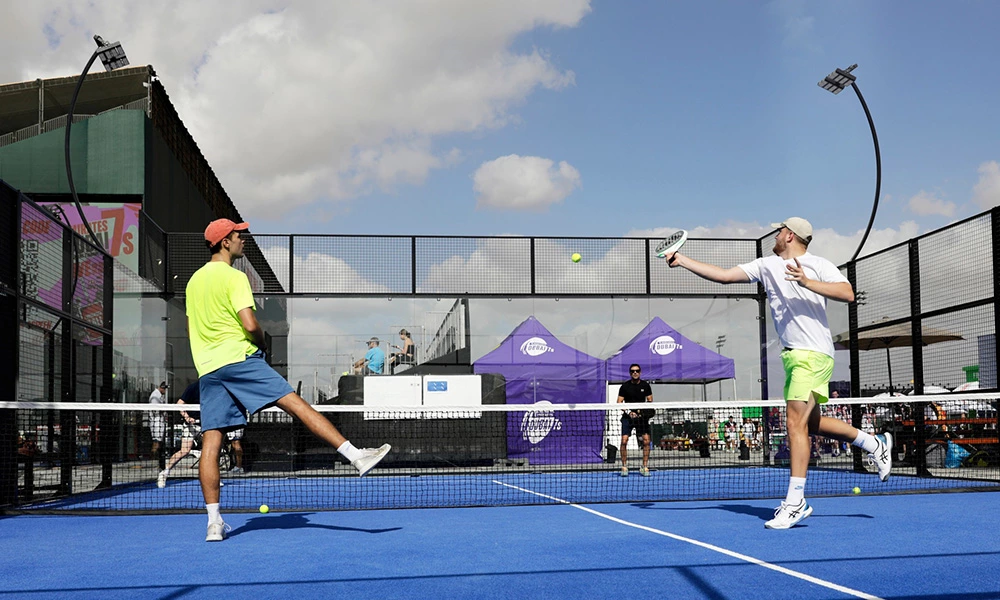
If you need a detailed quote, CAD drawings or real case demonstrations, please contact the UNIPADEL professional team. We have provided one-stop padel solutions for more than 100 projects around the world.

